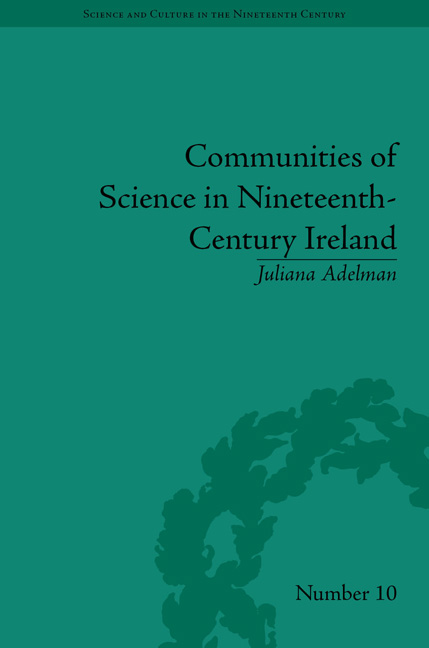2 - University education
Summary
Where are the teachers of civil engineering – where are the lecturers on Chemistry – and on the other sciences applicable to the promotion of human happiness? Not in this country; the Dublin University forbids it. We must send our children to England or Scotland or Germany; we must send them from the parental roof to become strangers to their friends and their country, if we wish them to be educated.
Cork Southern ReporterThe middle of the nineteenth century saw the unprecedented expansion of science teaching at the highest levels. In the 1840s the Museum of Irish Industry and the Queen's Colleges opened, followed by the Catholic University in 1854. These institutions responded to the perceived need for technical and scientific education in Ireland while also providing new opportunities for the Catholic middle classes in particular. Yet these new developments also drew science into political and religious controversies over the control of education. As one Catholic appointee was later to state, ‘It is not a desirable thing that scientific appointments should be mixed up with the question of religion; but in Ireland, unfortunately, this has long been the rule.’ In Ireland religion was also politics and thus scientific appointments and the philosophy of science education were thoroughly mixed up with political and religious controversy during the nineteenth century.
As we have seen in the previous chapter, scientific societies participated in the movement for educational reform in nineteenth-century Ireland. They offered alternative means of education, both formally through lectures and informally by encouraging self-education. Their members were also frequently advocates for the reform of education on a wider scale and thus many of them were supporters of plans to create new places of higher education in provincial Ireland. Sir Robert Peel's administration introduced the Colleges (Ireland) Act in 1845 in order to meet just such a demand.
- Type
- Chapter
- Information
- Communities of Science in Nineteenth-Century Ireland , pp. 43 - 70Publisher: Pickering & ChattoFirst published in: 2014



